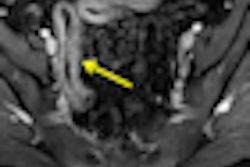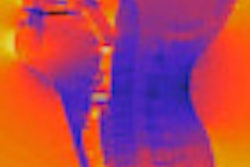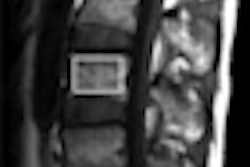Dear AuntMinnie Member,
Gadolinium-based contrast agents have developed a bad reputation due to news reports linking the MRI contrast media to the development of nephrogenic systemic fibrosis (NSF), a debilitating skin condition. But gadolinium contrast actually has a good safety record, at least with respect to short-term adverse events.
So concludes a new study we're highlighting this week in our MRI Digital Community. Rather than track NSF incidence, the researchers focused on short-term adverse events that can happen immediately after contrast administration.
What's remarkable about the study is its large sample size (150,000 patients) and lengthy review period (10 years). While gadolinium-based contrast was found to be relatively safe, there were differences in the adverse event rates between the five MRI contrast products followed. Find out what they are by clicking here.
In other news in the community, research presented at last week's International Stroke Conference in Los Angeles found that MRI can be useful in detecting stroke in young adults presenting to the emergency department. The finding is important because many ED staffs do not consider stroke as a diagnosis in these patients due to their young age.
Learn more by clicking here, or visit the community at mri.auntminnie.com.
Finally, a new study released online today in Radiology found that breast MRI screening can detect invasive cancers missed by mammography in women who have received radiation therapy for other diseases. Despite breast MRI's demonstrated utility in these women, few receive breast MRI screenings, according to the researchers. Get the rest of the story by clicking here.
CAD for US and VC
In other news, computer-aided detection (CAD) software is demonstrating its utility for a wide variety of applications. We're featuring two of them -- ultrasound and virtual colonoscopy -- in our Advanced Visualization Digital Community this week.
First up is an article on the use of CAD for analyzing breast ultrasound exams. Researchers at the University of Toronto used a commercially available software application in two modes -- one with the CAD algorithm operating on its own, independent of the radiologist, and the other with the radiologist using CAD in an interactive fashion.
Which technique produced better diagnostic accuracy? Find out for yourself by clicking here.
University of Chicago researchers also put a CAD algorithm through its paces in analyzing virtual colonoscopy studies. Although previous research has indicated that VC CAD is highly accurate for detecting polyps when operating on its own, that doesn't necessarily mean it will improve the clinical performance of radiologists -- particularly expert readers.
The researchers found that the CAD algorithm did make a difference, especially in the critical area of polyps 6 to 9 mm in size. Learn more by clicking here, or visit the community at vc.auntminnie.com.



.fFmgij6Hin.png?auto=compress%2Cformat&fit=crop&h=100&q=70&w=100)




.fFmgij6Hin.png?auto=compress%2Cformat&fit=crop&h=167&q=70&w=250)











